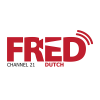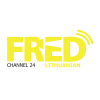“Red Path”, interview with director Lotfi Achour
Lotfi Achour’s Red Path, at the Locarno Film Festival: a poignant and immersive exploration of childhood trauma through a dreamlike lens.
Listeners:
Top listeners:
 play_arrow
play_arrow
ENGLISH Channel 01 If English is your language, or a language you understand, THIS IS YOUR CHANNEL !
 play_arrow
play_arrow
ITALIAN Channel 02 Se l’italiano è la tua lingua, o una lingua che conosci, QUESTO È IL TUO CANALE!
 play_arrow
play_arrow
EXTRA Channel 03 FRED Film Radio channel used to broadcast press conferences, seminars, workshops, master classes, etc.
 play_arrow
play_arrow
GERMAN Channel 04 Wenn Ihre Sprache Deutsch ist, oder Sie diese Sprache verstehen, dann ist das IHR KANAL !
 play_arrow
play_arrow
POLISH Channel 05
 play_arrow
play_arrow
SPANISH Channel 06 Si tu idioma es el español, o es un idioma que conoces, ¡ESTE ES TU CANAL!
 play_arrow
play_arrow
FRENCH Channel 07 Si votre langue maternelle est le français, ou si vous le comprenez, VOICI VOTRE CHAINE !
 play_arrow
play_arrow
PORTUGUESE Channel 08
 play_arrow
play_arrow
ROMANIAN Channel 09 Dacă vorbiţi sau înţelegeţi limba română, ACESTA ESTE CANALUL DUMNEAVOASTRĂ!
 play_arrow
play_arrow
SLOVENIAN Channel 10
 play_arrow
play_arrow
ENTERTAINMENT Channel 11 FRED Film Radio Channel used to broadcast music and live shows from Film Festivals.
 play_arrow
play_arrow
BULGARIAN Channel 16 Ако българският е вашият роден език, или го разбирате, ТОВА Е ВАШИЯТ КАНАЛ !
 play_arrow
play_arrow
CROATIAN Channel 17 Ako je hrvatski tvoj jezik, ili ga jednostavno razumiješ, OVO JE TVOJ KANAL!
 play_arrow
play_arrow
LATVIAN Channel 18
 play_arrow
play_arrow
DANISH Channel 19
 play_arrow
play_arrow
HUNGARIAN Channel 20
 play_arrow
play_arrow
DUTCH Channel 21
 play_arrow
play_arrow
GREEK Channel 22
 play_arrow
play_arrow
CZECH Channel 23
 play_arrow
play_arrow
LITHUANIAN Channel 24
 play_arrow
play_arrow
SLOVAK Channel 25
 play_arrow
play_arrow
ICELANDIC Channel 26 Ef þú talar, eða skilur íslensku, er ÞETTA RÁSIN ÞÍN !
 play_arrow
play_arrow
INDUSTRY Channel 27 FRED Film Radio channel completely dedicated to industry professionals.
 play_arrow
play_arrow
EDUCATION Channel 28 FRED Film Radio channel completely dedicated to film literacy.
 play_arrow
play_arrow
SARDU Channel 29 Si su sardu est sa limba tua, custu est su canale chi ti deghet!
 play_arrow
play_arrow
“Conversation with” at the 20th Marrakech IFF, interview with actor Willem Dafoe Bénédicte Prot

At the Locarno Film Festival, FRED Film Radio interviewed Irish director Aislinn Clarke about her film Fréwaka, showcased Out of Competition. The film, a deeply Irish horror story, explores generational trauma through the lens of folklore and superstition, set against the eerie backdrop of the Irish countryside.
Aislinn Clarke’s passion for horror is evident in Fréwaka. Raised on a steady diet of horror films, she finds the genre comforting and a way to channel anxiety. “Horror films have rules, and we understand they’re not real,” she explains, viewing them as a controlled escape from the chaos of the world. For Clarke, horror is a universal genre that resonates with audiences everywhere, despite cultural differences.
Fréwaka delves into Ireland’s dark history, particularly its unspoken traumas passed down through generations. Aislinn Clarke sees horror as a tool to confront social issues in a non-confrontational way, allowing audiences to engage with difficult topics through the safety of narrative. The film draws heavily on Irish myths, particularly the Na Sí, malevolent fairy folk from Irish folklore. “They’re not cute like Tinkerbell; they’re vengeful and brutal,” Clarke notes, making them the perfect vehicle to explore the deep-seated traumas of Irish history.
While Aislinn Clarke didn’t consciously model Fréwaka after specific films, she acknowledges the influence of folk horror classics like The Wicker Man. The rural Irish setting plays a crucial role in the film, with the main location—a previously unused period house on the border of Northern and Southern Ireland—adding to the film’s unsettling atmosphere. Clarke describes finding the house as a moment of “fate,” perfectly aligning with the film’s themes.
Fréwaka focuses on female characters, a deliberate choice by Clarke to highlight the unique traumas faced by Irish women. Despite the small pool of fluent Irish-speaking actresses, Clarke found the perfect cast to bring her vision to life. The film, shot entirely in Irish, was a natural fit for Clarke, who wanted to use the language to explore the cultural and historical weight carried by Irish women.
Aislinn Clarke hopes Fréwaka resonates with audiences beyond its Irish roots, believing that horror’s universal appeal will allow viewers from all cultures to connect with the film. While she’s not exclusively a horror director, Clarke’s love for the genre and its ability to address dark, complex themes suggests that her future projects will continue to explore the shadows of the human experience.
Shoo is sent to a remote village to care for an agoraphobic woman who fears sinister entities, the Na Sídhe. As they develop a connection, Shoo is consumed by the old woman’s paranoia, rituals, and superstitions, eventually confronting the horrors of her past.
Written by: Federica Scarpa
American Warewolf in London The Wicker Man
Guest
Aislinn ClarkeFilm
FréwakaFestival
Locarno Film FestivalLotfi Achour’s Red Path, at the Locarno Film Festival: a poignant and immersive exploration of childhood trauma through a dreamlike lens.
Mar Coll's Salve Maria, in competition at the Locarno Film Festival, explores the dark side of motherhood with intense visuals and raw emotional depth.
Hochhäusler's Death Will Come dives into the dark underbelly of Brussels, where power and mortality collide in a gripping gangster thriller.
Edgar Pêra’s Telepathic Letters blends AI-generated visuals with the philosophies of Lovecraft and Pessoa, creating a unique cinematic experience.
Jackie Chan will receive the 2025 Pardo alla Carriera at the Locarno Film Festival. The beloved action star will also present screenings of Project A and Police Story, followed by a public panel on August 10.
Juliette Binoche leads a distinguished jury featuring Halle Berry, Payal Kapadia, Alba Rohrwacher, Leïla Slimani, Dieudo Hamadi, Hong Sangsoo, Carlos Reygadas, and Jeremy Strong at the 78th Festival de Cannes.
Acclaimed director of The Holdovers and Sideways to lead the International Jury at the 82nd Venice International Film Festival.
For the first time in its history, the Cannes Film Festival reveals two official posters for its 78th edition, inspired by Claude Lelouch’s 1966 Palme d’Or-winning masterpiece A Man and a Woman.





© 2023 Emerald Clear Ltd - all rights reserved.